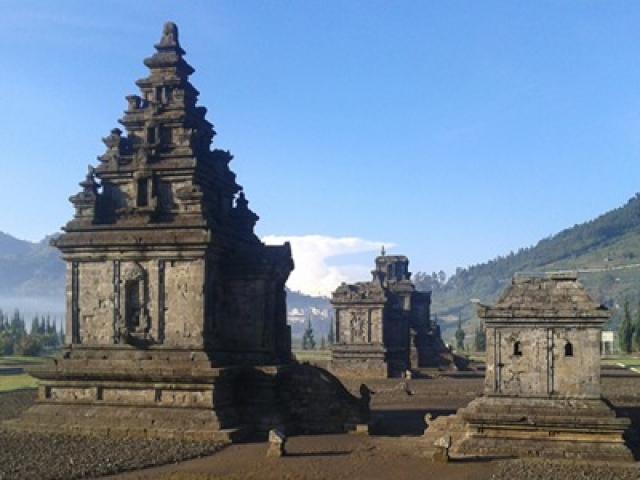
Dieng Temple is a place of Hindu temple where located on the mountain. Dieng Complex Hindu temple occupies a plateau at an altitude of 2.093 meters above sea level, extending from north to south about 1900 meters with a width of 800 meters.
The Sanjaya Dynasty built the Dieng temple in the early 7th century AD, and it is the oldest Hindu temple in Java. In Dieng was discovered a stone inscription dated 808 AD. It is the oldest inscription in ancient Javanese script. Shiva statue was found in the area and is now in the National Museum in Jakarta. Dieng temple probably was built in 2 phases: the first phase began in the late 7th century AD and included the construction of the Arjuna, Semar, Puntodewo, and Gatutkaca temples. The second stage is the continuation of the first phase, the last in 780 AD.
Discovered by a British soldier in the year 1814 when he traveled and saw it in flood conditions. Van Kinsbergen led efforts to drain the lake around the temple in 1956. Its efforts dried followed by the Dutch Government in 1864, followed by recording and taking pictures by Van Kinsbergen. The Dieng temple is divided into three groups and one individual temple is named after the character of the puppet story from Mahabharata. The three groups of temples are the Arjuna, the Dwarawati, the Gatotkaca, and one stands up the small temple of Bima.
